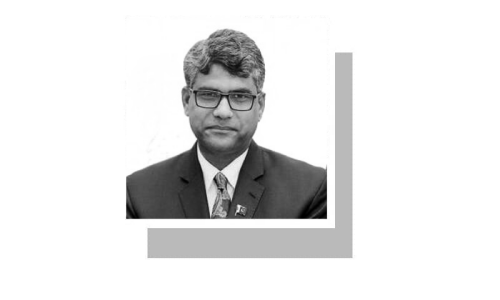A NEW global stocktaking report released today by Unicef shows that climate change is impacting almost every aspect of child health and well-being, from pregnancy to adolescence. Nowhere is the impact more visible than on children in Pakistan, which recorded the wettest April this year in over 60 years. Torrential and unseasonal rains swept through Pakistan, killing 144 people. In KP, 33 children died; 24 injured were children.
In 2022, I saw first-hand how 10 years’ worth of rains were dumped on villages in southern Sindh, triggered by climate change. Five hundred children lost their lives due to unprecedented rainfall, the highest recorded since 1961. The rain swallowed 12-year-old Mehreen’s house and belongings. Together with her parents and four siblings, Mehreen lived in a makeshift shelter for months. I met hundreds of children like Mehreen, whose lives were upended by the floods.
Despite aid efforts, almost 9.6 million children still needed humanitarian assistance in flood-affected areas in December 2023. Many children didn’t have enough food to eat or safe water to drink. Thousands were malnourished. Living and working in Pakistan, I am an eyewitness to the devastation caused by climate change. Year on year, children in Pakistan are caught in a vicious cycle of drought, water scarcity and floods. From the moment of conception until they grow into adulthood, the health and development of children’s brains, lungs, and immune systems are affected by their environment.
Children are more likely to suffer from air pollution than adults, leading to life-threatening respiratory diseases. As a result, about 12 per cent of deaths in Pakistani children under five are due to air pollution. Children suffer unequally because of global warming. Poorer children simply don’t have the ability to cope like the privileged. In fact, the hardest-hit districts in Pakistan are amongst the most vulnerable. With an event like the 2022 floods, we could expect to see an 18pc increase in the prevalence of child marriage, which could erase five years of progress.
Can we save children from us?
I am also concerned. As a father of four children, I worry about their future and that of every child and generation who will inherit from us. Despite children’s unique vulnerability to climate change, only 2.4pc of climate finance from climate funds supports projects for children. In September 2022, for the first time, the United Nations Committee on the Rights of the Child published General Comment 26, recognising children’s rights to live in a clean, healthy, and sustainable environment.
While I am an eyewitness, I am also a polluter. As an emitter with a carbon footprint, I contribute to climate change with my choices, work and sheer existence. Every time I eat, consume, buy or travel, I add to global emissions. But blame does not fall equally. According to Oxfam, the world’s richest 10pc is responsible for half of all global emissions. That, among other things, is heating up the planet. Everyone is accountable — individuals, families, businesses, and activists. We need to act on climate change beyond emergency relief for the Pakistan floods. We need to plan over the long term. This is everyone’s business.
For the first time, decision-makers at COP28 in Dubai paid attention to the unique impacts of climate change on children’s health and well-being. They proposed an ‘expert dialogue’ at COP30. Now we urge world leaders to work towards making COP30 a children’s COP — where we secure the 1.5 degrees Celsius temperature limit that the next generation needs. But as a collective, we can and must do more.
First, businesses must review practices that pollute the water and air, and companies should play a stronger role in reducing fossil fuels. Second, world leaders should take climate finance seriously. It can give countries, parents and social workers the power to help children deal with climate change. That means more money to build schools, wells, tanks, and health centres that can withstand climate shocks such as floods and cyclones. Third, for our children’s future, financing mechanisms like the Loss and Damage Fund should be even more responsive to the needs of children.
If nothing changes, in 2030, emissions will be 22 gigatonnes higher than the 1.5°C limit will allow. Many more children could die, and the climate catastrophes will not be confined to vulnerable countries like Pakistan. Radical action is needed now. So, I ask every person and organisation to reflect on what they can do. Personally, I am making a commitment to go plastic-free, recycle more, buy more consciously, and conserve energy use. What will you do?
As 15-year-old Selena Khawaja, the world’s youngest mountaineer, says “remember that if there is a problem on this Earth, we don’t have another planet”.
The writer is Unicef representative in Pakistan.
Published in Dawn, June 5th, 2024












































Dear visitor, the comments section is undergoing an overhaul and will return soon.